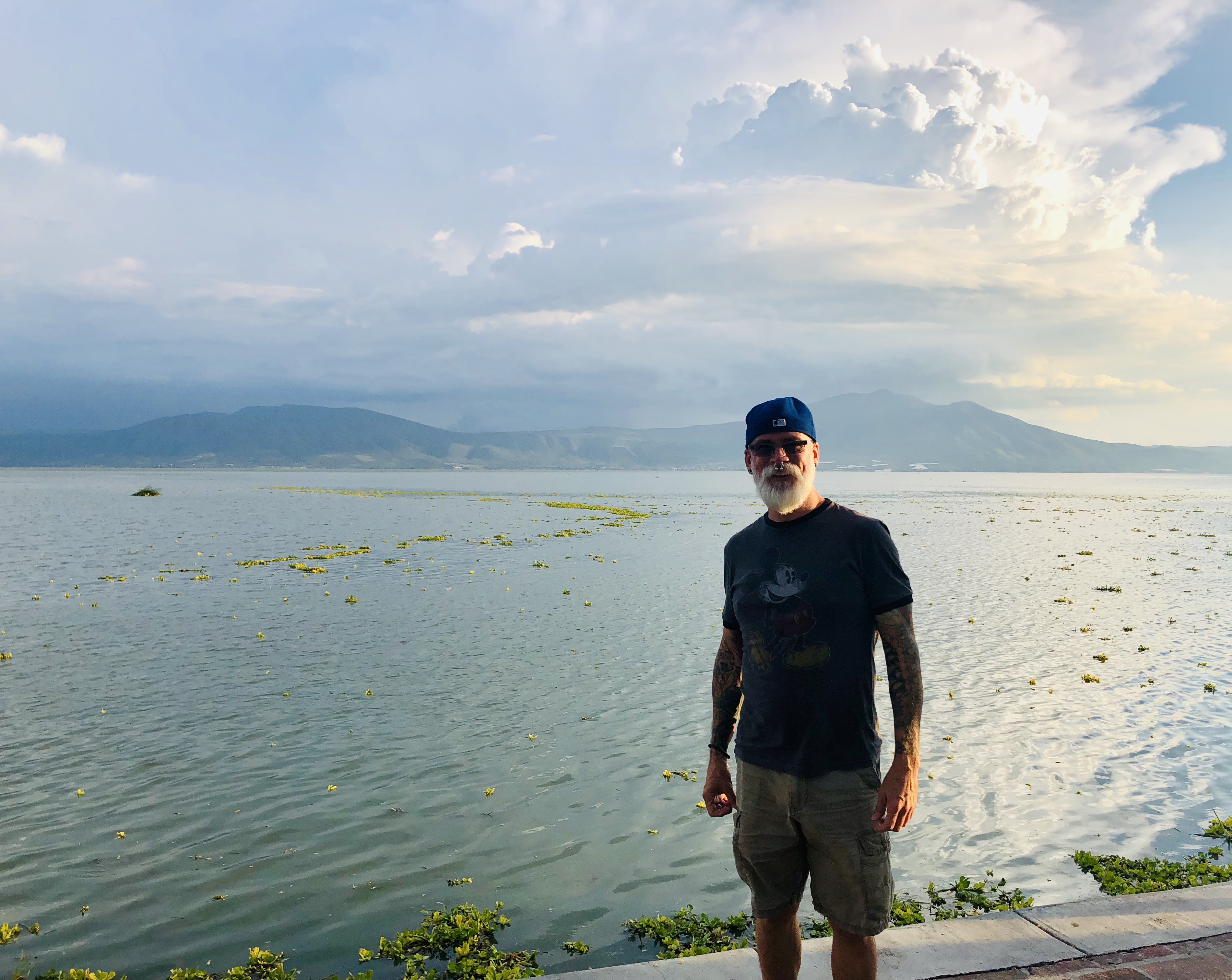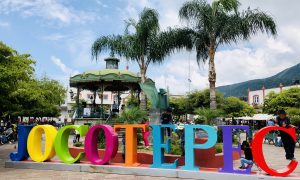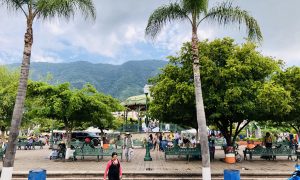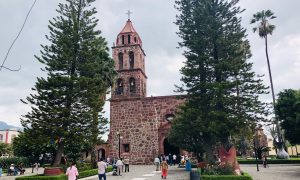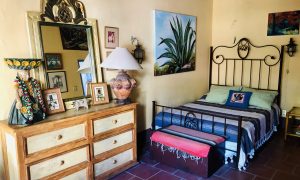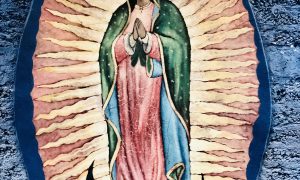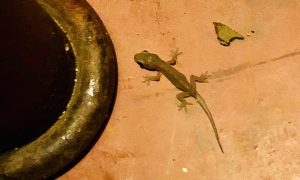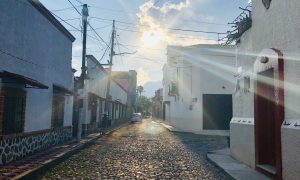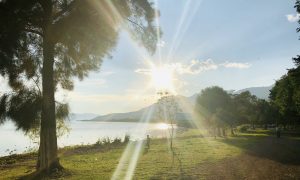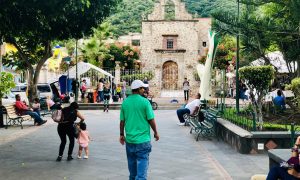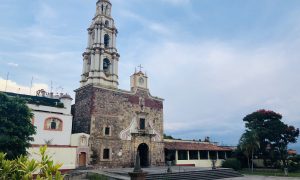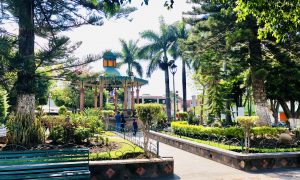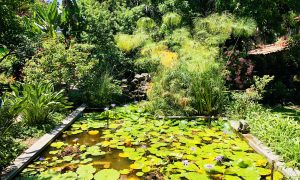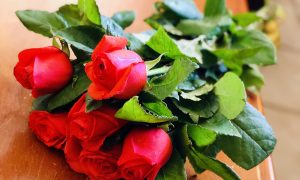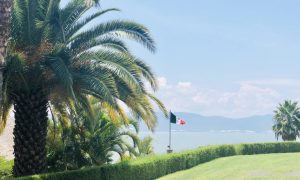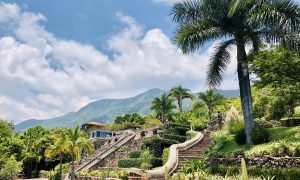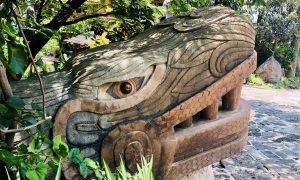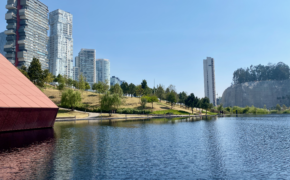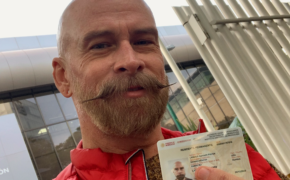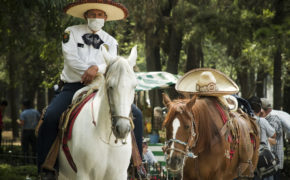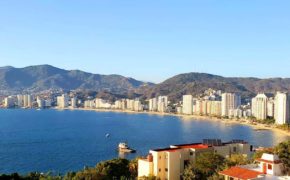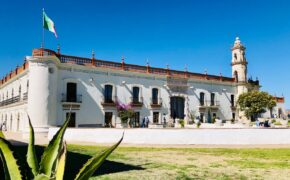Ajijic on the shore of Lago de Chapala
Having enjoyed two weeks at the beach in Zipolite, Oaxaca at the start of my move to Mexico, I moved on to Guadalajara, Jalisco for teacher training. While I was in town, I was able to visit a few nearby places including the arts and crafts centers of Tonalá and Tlaquepaque, and beautiful nearby Lago de Chapala.
Lago de Chapala is Mexico’s largest lake, mainly fed by the Lerma River–Mexico’s second-longest, and other streams flowing down from the surrounding mountains. It is the main source of drinking water for the city of Guadalajara, and a popular weekend destination, though there isn’t much recreation on the lake itself. The lake itself is fairly shallow, with an average depth of just 7 meters (23 feet.) I made my visit in late August, the middle of the rainy season, so the lake level was at its seasonal high, flooding shorelines and adjacent fields all around, which only seemed to attract wildlife to the flooded shallows in search of an easy meal. The lake is in a spectacular natural setting just over the mountains to the south of the city of Guadalajara in a valley bordered on the south by the towering Nevado de Colima volcano.
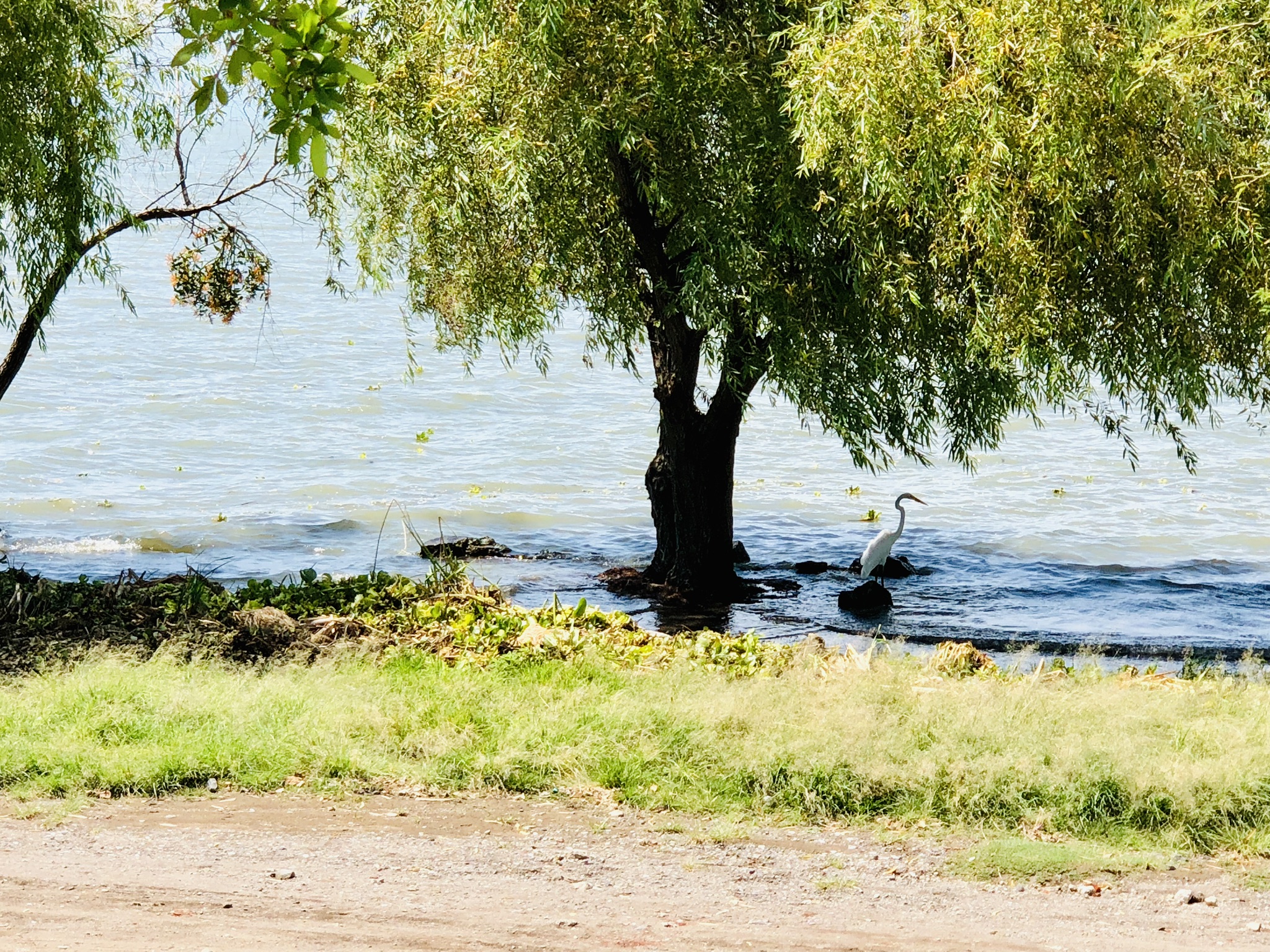
Minor flooding at Lake Chapala during the rainy season
According to Wikipedia, the area around the lake has been inhabited since at least 100 BCE by the Nahua people. Most of the towns along the lake predate the Spanish Conquest in the 1500s, including Jocotepec, known as Xuxutepeque in the pre-Hispanic era, a small fishing village at the western end of the lake settled by the Nahua in 1361. Here, they built a temple to their god, Iztlacateotl, and practiced human sacrifice at the site now occupied by a large Catholic church built after the Spanish Conquest of the area in 1520. We enjoyed birria for lunch here on Sunday, after discovering that the restaurant we had planned to go to in nearby San Juan Cosalá was closed on Sundays. The town of Jocotepec was officially founded in 1529 according to a property title issued by Hernan Cortes, a copy of which can be found today in Jocotepec city records.
- The central plaza of Jocotepec
- People out and about in the plaza
- A church over the ruins of a Nahua temple
My host for the weekend was my friend Debita, who had moved to Mexico from San Francisco 3 years before. We met 8 years earlier in Tulum, Quintana Roo and remained friends since, but had not spent any quality time together in a long time, so I was really happy to be able to see her again and catch up. Debita lives in Ajijic (pronounced “ah-HEE-hick”), a large village located between the towns of San Juan Cosalá and Chapala on the north shore of the lake. Ajijic has become a popular retirement destination for American and Canadian expats, so on the weekends don’t be surprised to find dance floors and bars full of 70-something English-speaking partying gringos! Debita lives in a beautiful century-old villa near the center of town. She put me up in the most delightful guest room I have ever stayed in, which I shared with a friendly gecko. Geckos are considered good luck since they eat all the bugs, and don’t even make me tell you about the size of cockroaches in Ajijic, alright? Right!
- Debita’s delightfully beautiful guest room
- The Virgin of Guadalupe, patron saint of Mexico
- My sweet little roommate for the weekend
It’s really easy to get to Lago de Chapala from Guadalajara, taking about an hour from the centro histórico of Guadalajara. It only cost about $56 MXN (about $2.75 USD)! The bus station was a short walk from the hostel where I stayed during my time in Guadalajara, so it couldn’t have been any easier. It was my first visit, though, so of course I missed my stop and didn’t realize it until I was quite a ways past Ajijic in the town of San Juan Cosalá. Debita was kind enough to come find me in a cab, though I have to say I’ve been lost in worse places. I was immediately struck by the beautiful green hills of the Sierra de San Juan Cosalá behind the town and the stunning beauty of the lake with Nevado de Colima volcano towering into the sky on the other side of the lake. Not a bad first impression at all!
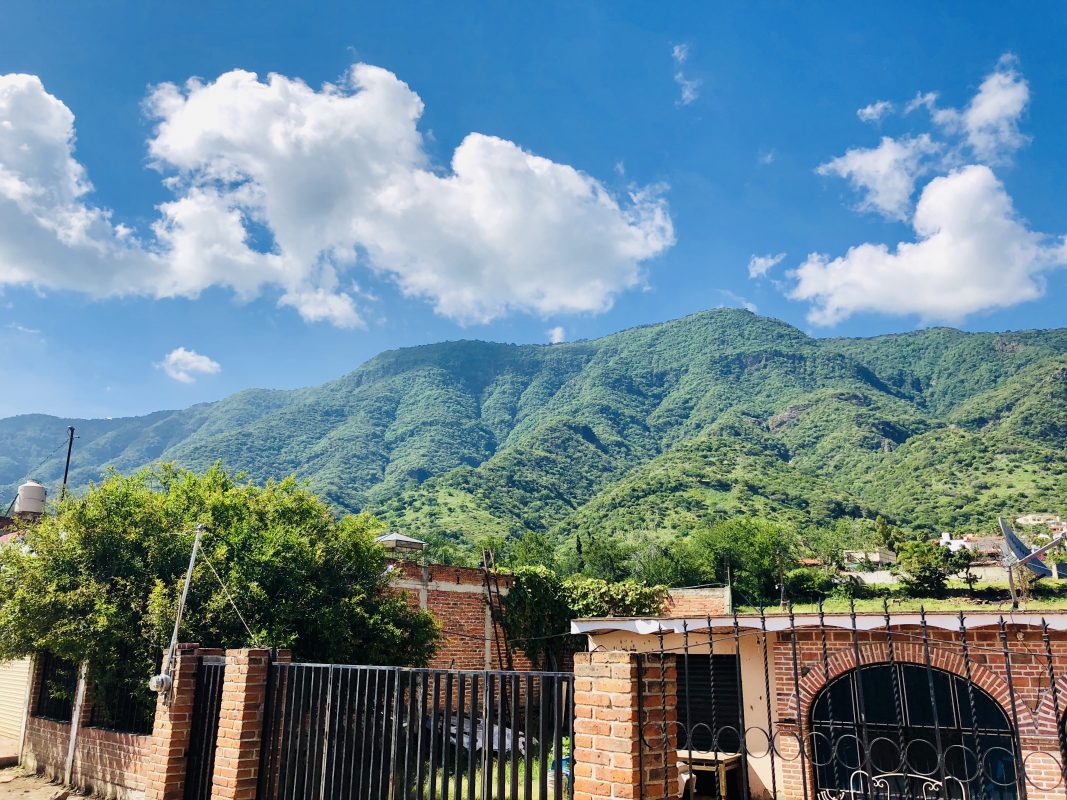
Beautiful green hills above San Juan Cosalá
After arriving to Debita’s beautiful home and settling in a bit, we decided to head out in the late afternoon to see the lake and check out the beautiful town of Ajijic. I was immediately struck by the lovely cobbled (adoquín) streets here. I had never seen streets done in such a way, including geometric patterns. During heavy rains, rainwater is absorbed by the dirt beneath the cobbled streets, but the streets still flood as the water rushes down the hill toward the lake. The cobbles are also effective at keeping vehicle speeds low, but they are not the easiest surface to walk on! We took our time slowly walking around Ajijic enjoying the late afternoon sunshine and gentle breezes, stopping every now and then to give our feet and legs a break. The shoreline near Debita’s house gently sloped into the lake, but in the centro you’ll find the nice wide, smooth Malecón with benches and lots of palm trees. We moved through slowly taking in the beautiful sunset, natural scenery, happy people, and delicious smells, all while treading carefully over the beautiful cobbles before heading to a local food truck site for dinner, and finally staying up late comparing stories about our lives in Mexico.
- The beautiful cobblestoned streets of Ajijic
- The gentle slope into Lago de Chapala, which has an average depth of just 7m (about 23 feet).
- Make sure to enjoy an afternoon stroll on the malecón in Ajijic
If you’ve ever traveled around Mexico, you may have noticed that towns large and small share many common features, starting with central plazas. Plazas in Mexico are public extensions of living space where people go afternoons and weekends to socialize with family and friends. Around the plazas, you’ll notice many things in common, including iron gazebos for music or public speech in the plaza, beautiful Catholic cathedrals or churches–sometimes built over the ruins of ancient temples, mercados and tianquis, restaurantes and cafés, ayuntamientos (city halls), municipal palaces, state and federal government buildings, and always an Oxxo or two. The scale of all this depends on the size and importance of the city. So, whereas you’ll find the gilded twin-spired Catedral de Guadalajara next to Plaza Guadalajara, in Ajijic you’ll find Parroquia San Andres Apostol adjacent to the Plaza Principal de Ajijic. On weekends here, the plaza bustles with vendors selling products to locals, expats, and tourists enjoying the pleasant centro of Ajijic as they go about their weekend.
- Weekend mornings in the centro
- Parroquia San Andres Apostol
- Plaza Principal de Ajijic
We got up early Saturday morning and headed toward the main plaza to have breakfast at a restaurant on the beautiful plaza. After breakfast, we headed out for a long walk around Ajijic, taking in the beautiful plants and birds, and charming residential alleyways where we found hanging fruit, flowers, cactus, and many cats and dogs. One really beautiful place to make sure to check out is the Lake Chapala Society. It is a community center that helps expats and locals communicate better in both English and Spanish. It does a lot of good work in the community, but the most honest reason to visit is to take in its lush gardens and poi ponds of its beautiful grounds. Don’t miss its large English-language library which is said to be the largest in Mexico, and mostly stocked with books left behind by expats and tourists.
- Charming residential alleyways
- Lake Chapala Society Poi Pond
- Long-stemmed roses
After a bit of walking around, we decided to stop for coffee before heading home. Here a young girl came in selling beautiful long-stemmed roses. We bought a dozen for $20 (~$1 USD) and gave the same amount to the girl as a tip causing her eyes to light up. It is not uncommon to see children of poor families selling flowers or other products. It is simply how many poor families make ends meet here. Though we can’t buy something from every vendor, we were happy to see how happy this sweet girl was when we bought her flowers.
We had delicious Thai food Saturday evening, the first time I’d eaten non-Mexican food since I arrived in Mexico not even 4 weeks before. It was an unexpected treat improved only by a visit to Debita’s favorite ice cream store where we sat out in the dark eating delicious small-batch ice cream watching thunderstorms flash out over the lake and above us in the Sierra de San Juan Cosala. It was the kind of living-in-the-present moment I’ve come to appreciate about living in Mexico. I say if you can’t be present for conversation with a friend over ice cream during a thunderstorm, you’re doing it all wrong.
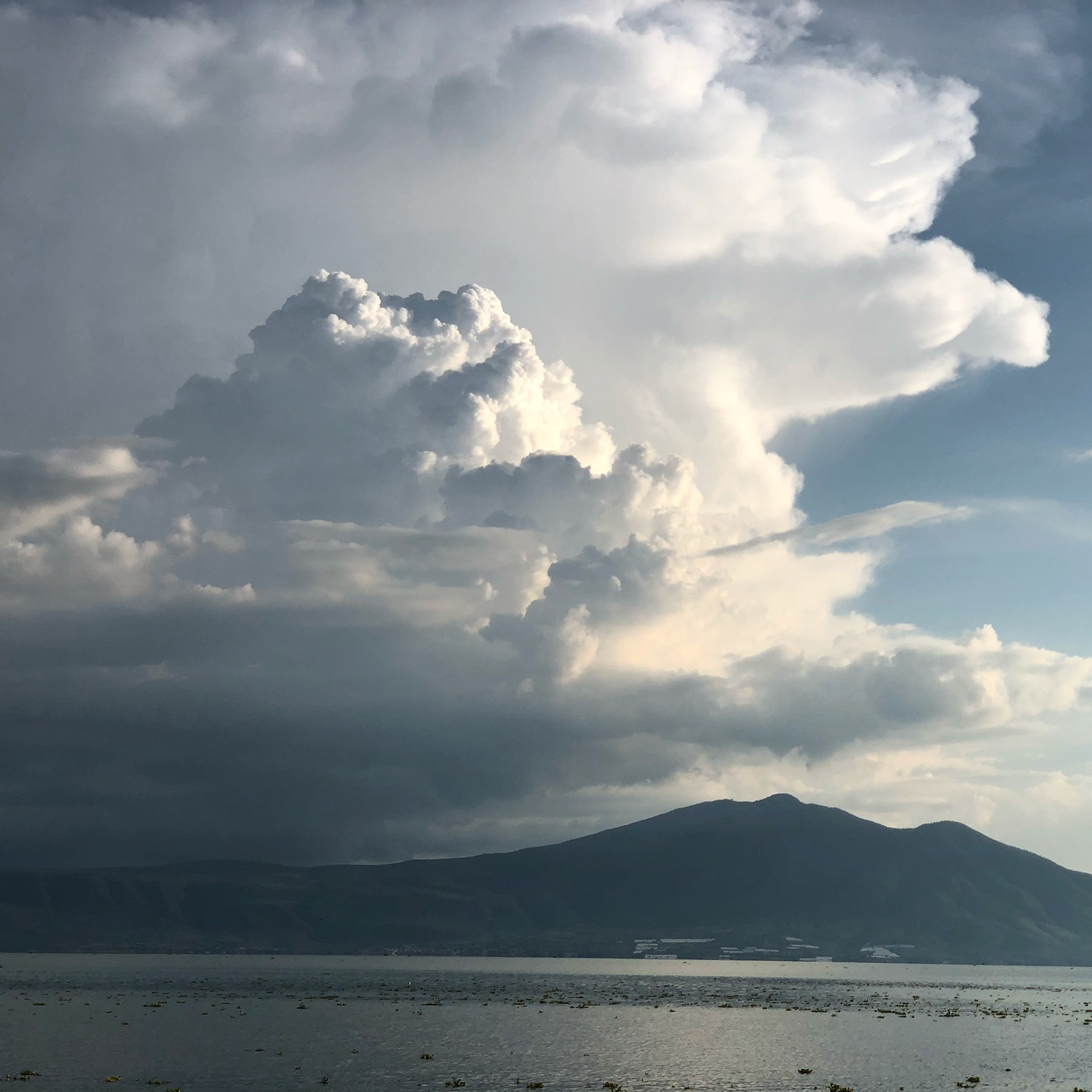
Afternoon thunderstorms over Vulcán de Colima
On Sunday morning, after spending a few hours in Jocotepec for breakfast and tianquis, Debita surprised me with a visit to the beautiful Monte Coxala resort. This beautiful resort is high in the hills directly above San Juan Cosalá, where I had arrived lost on Friday. It is a beautiful modern luxury hotel and spa with architectural references to Mexico’s ancient civilizations. On the grounds here you’ll see beautiful references to Olmec, Maya, and Mexica (Aztec) art including beautiful Olmec heads, Maya stellae, and Quetzalcoatl, the feathered serpent of the Mexica (Aztec) culture, common to many other Mesoamerican cultures. As if that’s not enough, the elevation of the hotel provides sweeping views, some framed architecturally, of the lake and volcano. We enjoyed an afternoon cake and cappuccino as we watched planes fly over lake as afternoon thunderstorms started to build around the volcano.
- Mexican flag flying over Monte Coxala
- Mesoamerican architecture
- Head of Quetzalcóatl
Since we hadn’t had time to do much in the town of Chapala itself, we took a short driving tour to see it. I will make a point to check out the Malecón there next time I visit. Unfortunately, it was about time for me to catch the bus back to Guadalajara. After a stop at her home to pick up my things, Debita dropped me off at the bus station in Ajijic, along the main highway. After paying another $56 MXN (about $2.75 USD), I was back in Guadalajara an hour or so later settled into my hostel getting ready for another week of teacher training. I really enjoyed my visit to Lago de Chapala. I would definitely recommend the visit to anybody visiting the Guadalajara area who wants a mini-escape. It’s a great place to spend a few days, and undoubtedly I have only scratched the surface of this wonderful place.
